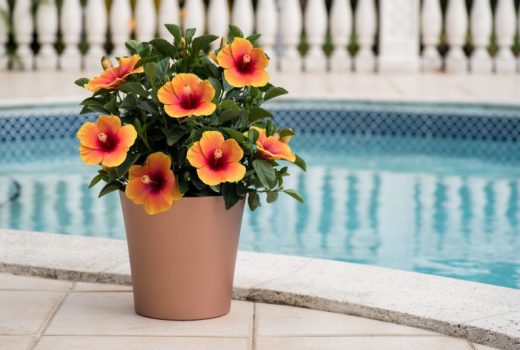Hibiscus plants are durable plants that give exotic look to your garden. They are tropical beauties and they can grow up to 15 feet in height. Their colorful blooms attract butterflies and hummingbirds to the garden.
The trumpet-shaped flowers of hibiscus are 3 to 6 inches in diameter with incredible protruding stamens. Some flowers can even have 8 inches in diameter. Each blossom lasts for only one day but flowers are produced constantly.
Hibiscus care can be difficult if you are growing it the first time. Here are some important hibiscus care tips for caring for the plants everyone should know…
Hibiscus Care | How to care for Hibiscus
Like other houseplants, you need to provide a suitable environment for hibiscus for proper growth. You should properly prepare the soil for the plants and provide the proper light, water, and fertilizer for their healthy growth. Let’s talk about different factors one by one…
1. Type of Soil
Hibiscus plants love slightly acidic soil. So you should plant them in acidic soil for better nourishment. If the soil is not acidic, you should add peat moss to your garden to increase the acidity.
You should plant the hibiscus plants two or three feet apart from each other. Don’t grow these plants until the frost threat is over. Because they can’t survive in cold temperatures.
2. Watering Hibiscus
Like other houseplants, hibiscus plants like moist soil that drain well. It means that soil shouldn’t be soggy because it can cause the roots to rot. Similarly, planting the plants in soggy soil can affect the blooming process of the plants.
You should use an irrigating system to make sure that plant is getting adequate water. The irrigating system drains out any excess water. Using a pot with holes can be another good option for planting these plants.
3. Temperature Requirement
Temperature is another most critical factor of hibiscus care. The ideal temperature for hibiscus is between 60 to 90o F in which plants flourish well. When temperatures drop to 32o F, you should move the plants indoors to protect the plants from cold. Because too cold temperature can severely damage the plants.
4. Optimal Lighting
For the best hibiscus care, you should choose a place where the plants can get excessive direct sunlight. The ideal duration for getting direct sunlight is five to six hours a day. During the growth, they need partial sunlight but during the bloom period, they need full sunlight. Therefore, you should try to provide full sunlight as much as possible.
5. Fertilizing Hibiscus
Fertilizing the plants don’t only speed up the growth process but also keep the plants healthy. You should always utilize liquid fertilizer for hibiscus care. Because liquid fertilizer is dispersed through the soil evenly.
It is good to choose a fertilizer with high potassium because potassium enhances the growth of hibiscus plants. Try to avoid using phosphorous because this mineral can be very dangerous for the plants. You can add worm castings or compost bark to the soil once a year to encourage growth.
6. Pruning Hibiscus
Pruning is not an essential factor for hibiscus care. Because plants are perfectly okay without pruning. However, it is good for additional caring. If you are intending to prune a plant, you should do it in early spring.
Pruning in early spring stimulates the budding process and helps the plants thrive throughout the summer months. If you are pruning the plants late in the season, you shouldn’t trim the branches too far back. Because it can affect the blooming process.
7. Preventing the Plants from Wintering
Hibiscus plants are not frost-hardy. When the temperature drops below 32o F, you should move the plants indoors. Make sure that the indoor temperature is above 50 degrees Fahrenheit. However, don’t forget to provide the plants direct sunlight after moving them indoors.
In winter, the plant’s leaves turn yellow sometimes. It is an indicator that you are overwatering your plants. Don’t overwater your plants to keep them healthy. Always water the plants when the soil is dry to the touch.
When you notice that leaves begin to fall, it means that hibiscus is entering into a dormant state. In this case, you should provide your plants a cool damp location to keep them in a dormant state during the winter.
8. Common Pests Issues
Aphids, whiteflies, and mites can create issues for hibiscus plants. If you notice an infestation, you can use mild dish soap to clean the affected leaves. If some leaves are branches are severely damaged, you can simply cut those branches and leaves to get rid of such pests.

